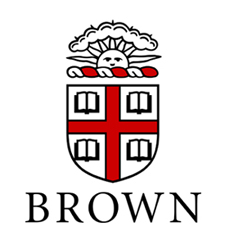Biographical note
Eleanor Elizabeth Crost, who introduced herself simply as Lyn Crost, was born in Brooklyn, New York on September 19, 1915, the daughter of Maurice Roland Crost and Eleanor Agnes Welch. Maurice Crost was born in Amsterdam (Holland) and had attended City College of New York for two years before meeting Eleanor Agnes Welch, who was from Hartford, Connecticut. Lyn Crost was raised in Hartford, Connecticut and entered Pembroke College in September of 1934, at which time she listed Mrs. Elizabeth B. Crost of Hartford, Connecticut, as her guardian and her church affiliation as Congregational. She received an A.B. in Social Studies from Pembroke College in 1938. By that time, she had been a Pembroke Scholar for three years, was elected to Phi Beta Kappa, and graduated magna cum laude with final honors.
During her student years at Pembroke College, Crost reported College Hill news for the Providence Star-Tribune, which went out of business shortly before her graduation from Pembroke. After graduation, she was offered a position writing for the women's section of the Providence Journal, but she declined and instead traveled to Hawaii to visit an aunt in 1939. While in Hawaii, she found a job with Dr. James Shoemaker, who was conducting a study on labor conditions in Hawaii for the U.S. Bureau of Labor Statistics. She subsequently worked as a reporter, writing a celebrity gossip column for the Honolulu Advertiser.
Just a few months before the Japanese attack on Pearl Harbor in 1941, Crost returned to the mainland, finding employment in Washington, D.C. She first worked in the Executive Office of the President with Dr. Pendleton Herring assisting with a study regarding the war preparedness efforts of the United States. She later found a job with the Associated Press in Washington, covering the proceedings of Congress. As an AP correspondent in Washington, she interviewed Joseph R. Farrington, the publisher of the Honolulu Star-Bulletin and Hawaii's delegate to Congress. Because of her previous experience in Hawaii, Farrington, who was concerned about the high casualties taken by Hawaiian soldiers of Japanese descent in Europe, offered her a position as the European correspondent covering the 100th Battalion/442nd Regimental Combat Team, an all Japanese-American unit. One of the few female reporters during the war, she followed this unit through Italy, France, and Germany until the war ended in 1945. After the war, she became the paper's Washington correspondent and later served as a special assistant at the White House during the Eisenhower administration.
In 1987, while following the Congressional debate on granting reparations to Japanese Americans who were interned in detention camps during the war, she became inspired to tell the story of the Nisei - second generation Japanese Americans - who served in the U.S. Armed Forces during World War II. As a result, she wrote Honor by fire: Japanese Americans at War in Europe and the Pacific, published in 1994, which details the contributions of Japanese-American soldiers in the Military Intelligence Service who played a vital role in the war in the Pacific as translators and interrogators. Royalties from the book were donated to a "Brothers in Valor" monument, which was erected at Fort DeRussy to commemorate the Nisei who had served with the 100th Infantry Battalion, the 442nd Regimental Combat Team, the Military Intelligence Service and the 1399th Construction Engineers' Battalion (which worked in Hawaii). After completing Honor by fire, Crost helped the Smithsonian's National Museum of American History assemble an exhibit on the experiences of Japanese Americans during the war. Her correspondent's uniform, Hermes typewriter, portrait, and war dispatches are today part of the permanent exhibit.
Crost first married Edward Kennedy, an AP war correspondent, in 1946. They had a daughter, Julia Kennedy, but the marriage ended in divorce. In 1955, she married Thomas W. Stern, a geologist, and retired from her position at the White House shortly after that. However, she continued to write the occasional article or short piece for a book, as well as providing periodic contributions to the Brown Alumni Monthly. In her later years, Crost was also active in promoting Club 100, the 442nd Veterans club, and other Nisei veteran's groups. Eventually, she contracted cancer and, on April 7, 1997, Lyn Crost Stern passed away from a brain tumor.


